Early Awareness
Subnautica is a game I was aware of for many years before actually playing it; my first awareness of it came from a friend (the same one mentioned at the beginning of the Starbound history page) playing it in 2015 or 2016. I do not recall much of what they said, except for it being scary.This was a sentiment that was reinforced by other occasional mentions from other people, such that by the time I had an opportunity to try it in December 2018, I was not very interested in doing so.
Ultimately, I did not end up purchasing the game until October 2021, and it still took another six months before I decided to finally try it.
Finally Trying The Game
In part prompted by comments from a few people who watched my playthrough of Outer Wilds in February 2022 (a game that I ended up finding very stressful and anxiety-inducing), I decided to play Subnautica for the first time in mid March.Sitting at the main menu (with the nose-diving Aurora), I was quietly preparing myself for an unpleasant and stressful experience, full of anxiety and jumpscares.
What I got was the exact opposite. Not once did I find the game stressful or scary - there was one jump scare, but it was caused by a perfect alignment of factors, and was quite minor - and in fact I was loving it from the very beginning. Subnautica perfectly matched the kind of exploration gameplay I love, the kind I have only rarely found, present in only a few other games (with Satisfactory being a notable recent example).
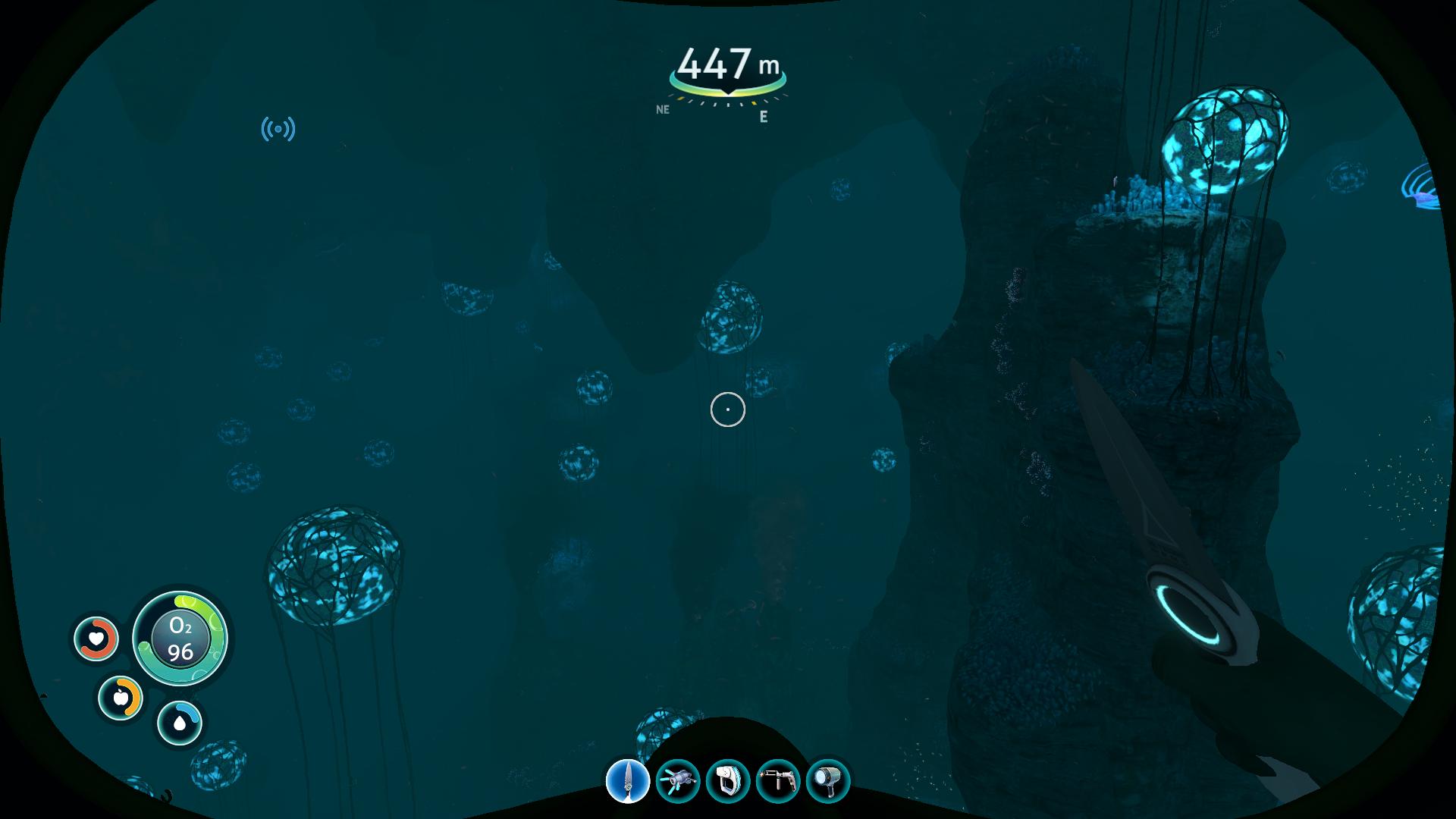
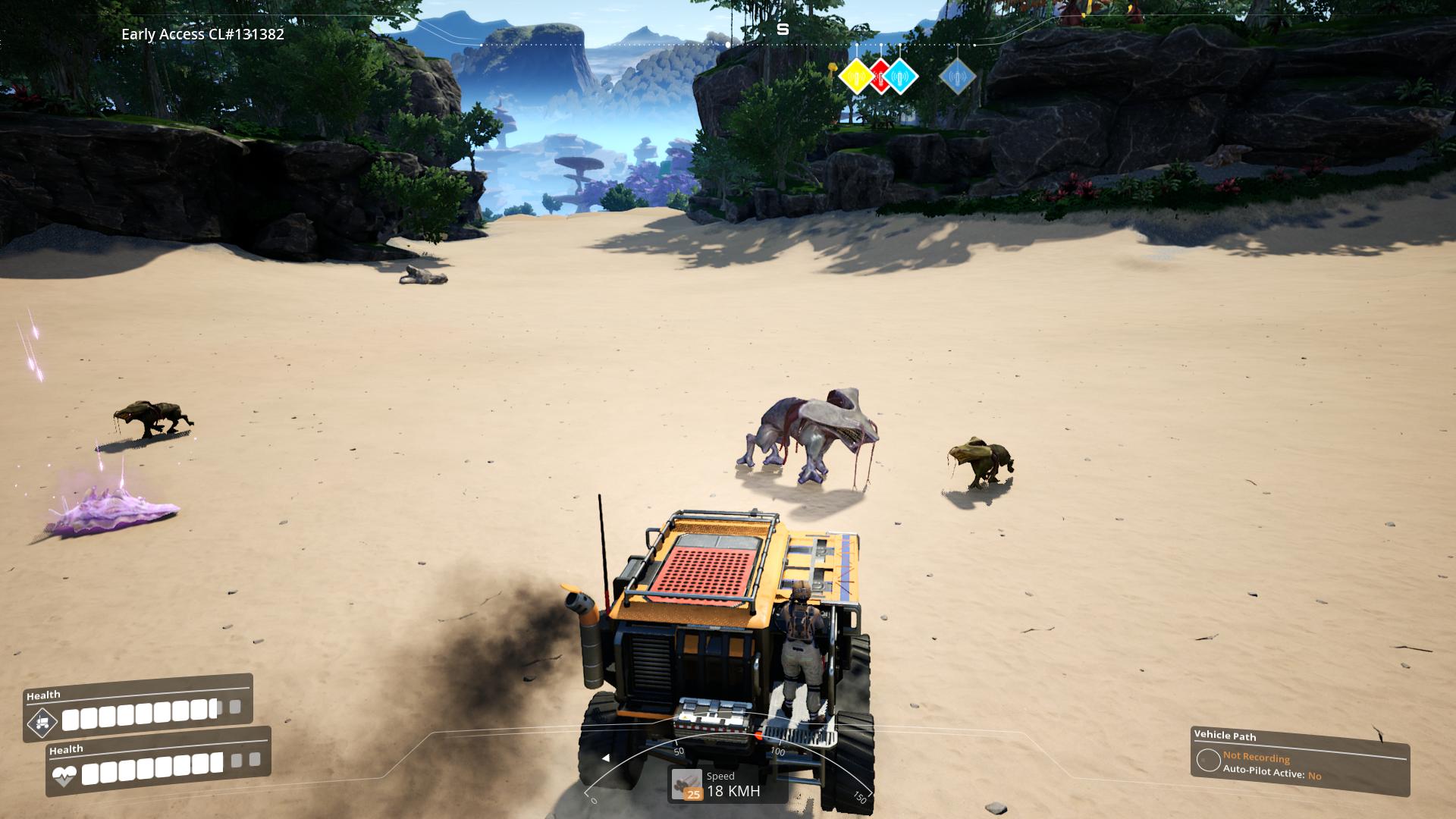
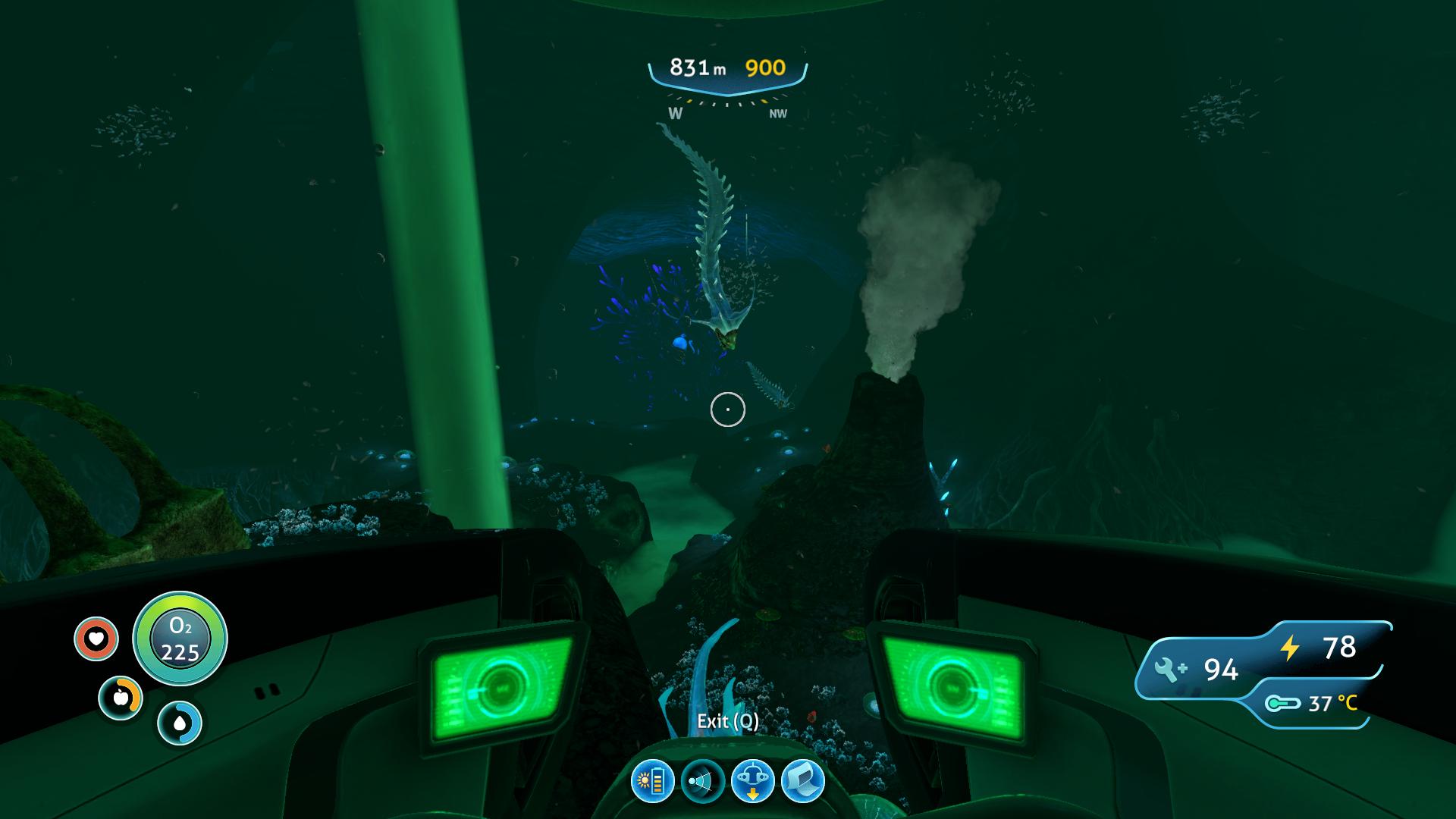
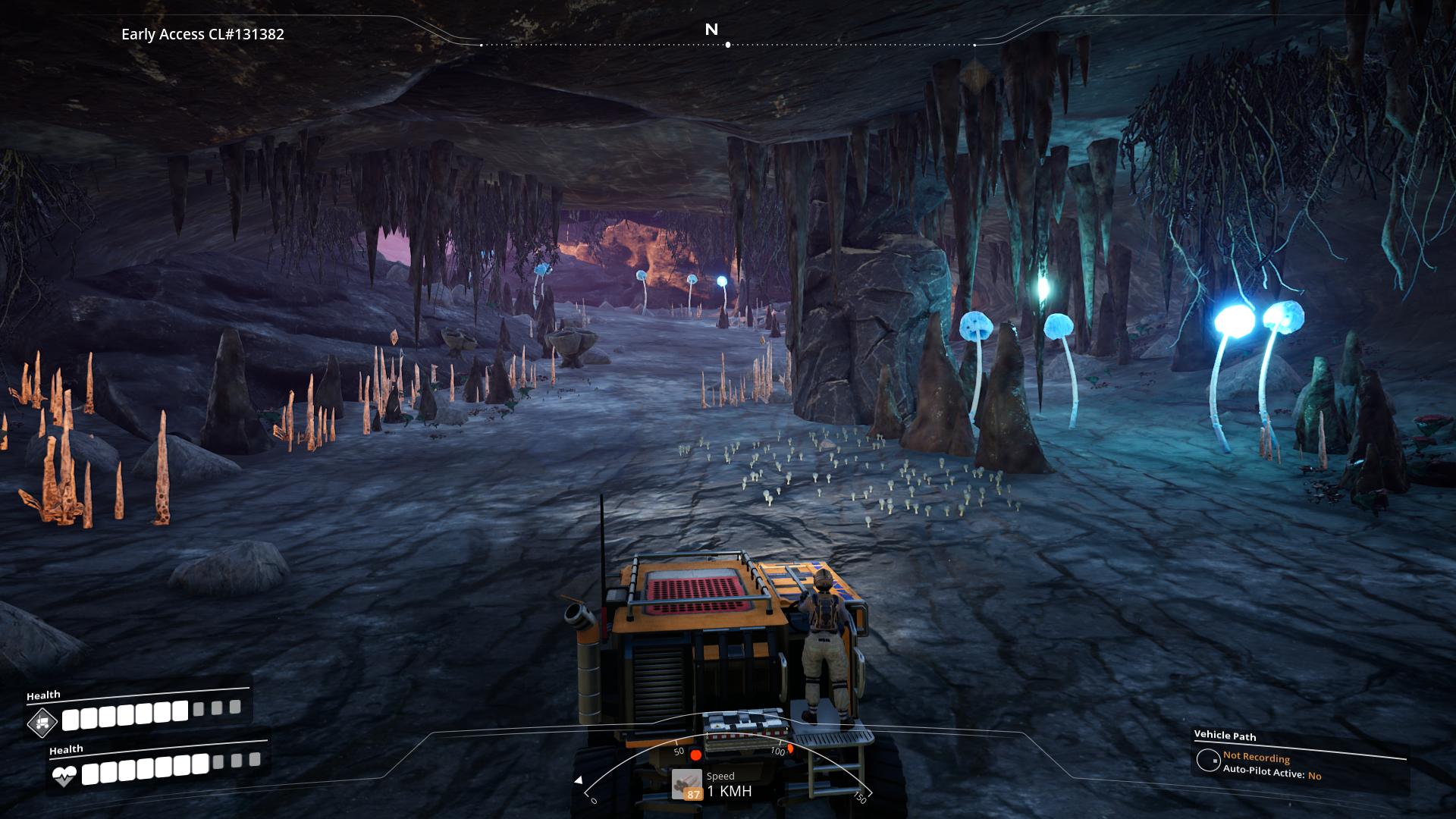
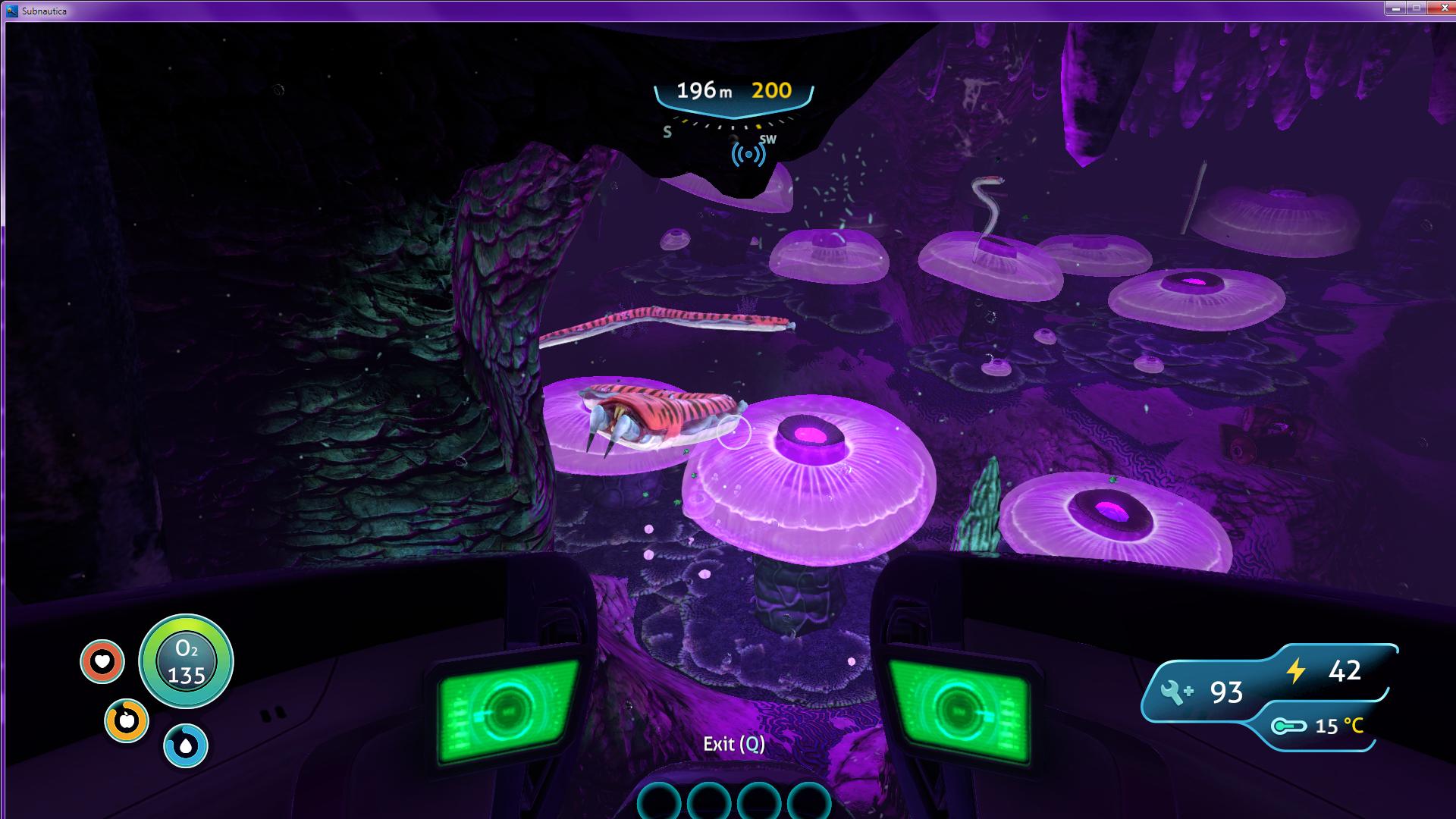
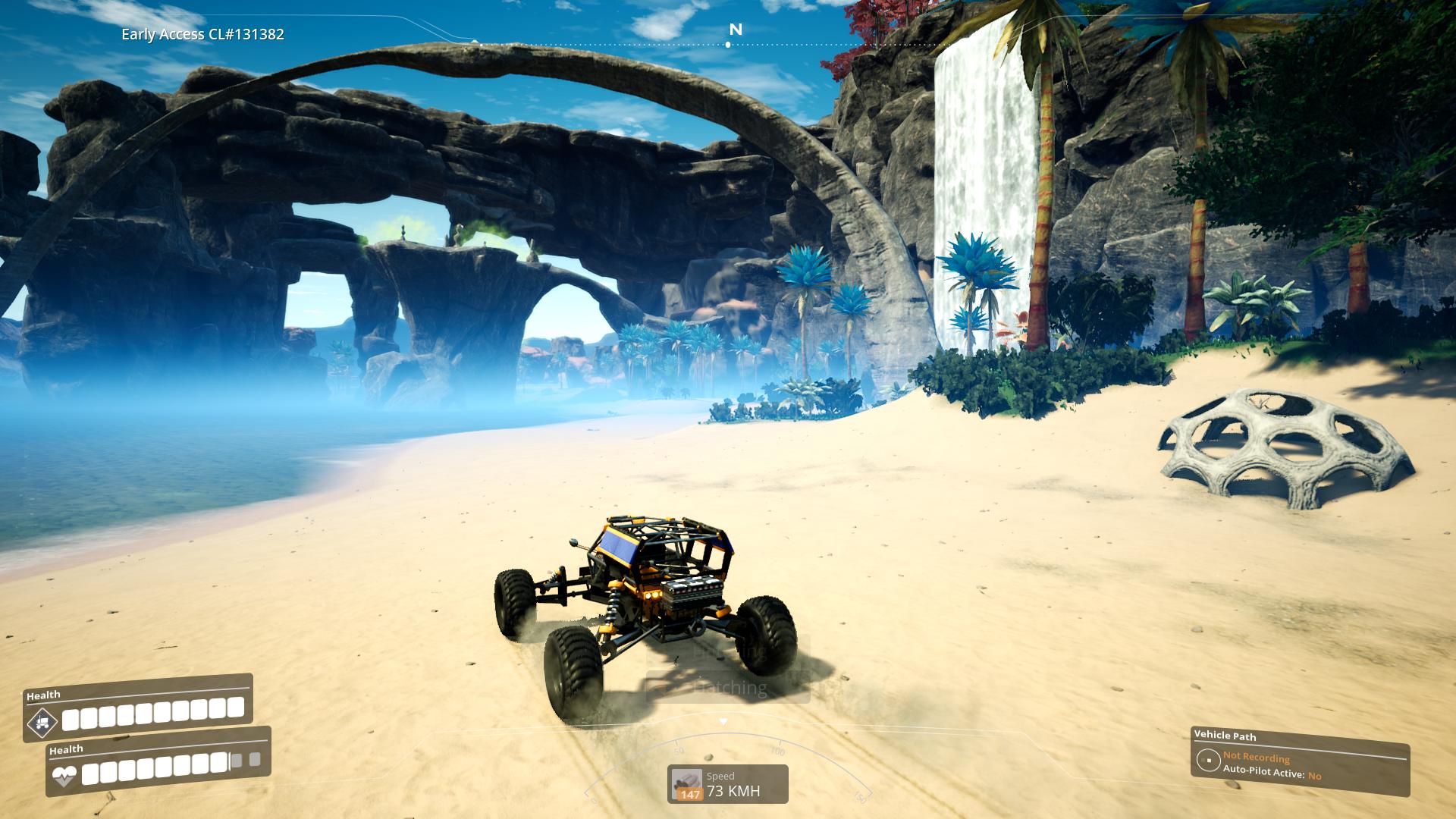
Both of these maps had very similar, very positive experiences when exploring unknown areas and finding new interesting locations, and I look back with similar fondness on both gameplay periods.
I spent the next three or so weeks extensively exploring the map - well beyond that which was strictly necessary to complete the story - and was quite disappointed once the supply of new content was exhausted.
Below Zero
From there, I moved on to trying the sequel. While it was still very much worth playing, I did not enjoy it nearly as much as the base game. The much more condensed map meant that after a few exploration forays, one has seen almost every unique area, and has seen nearly all of the game's content. Additionally, the story was much more beacon-driven than the previous; in the base game, the lifepod beacons were usually not leading you directly to the most valuable, useful, or interesting areas, but instead to their general proximity, with it being assumed that you would explore from those starting points, but in BZ, the target of the beacon is the thing which advances the story, and (given the lack of scattered wrecks or similar "silent" POIs) all one needs to do is travel where directed, when directed. This made the whole experience much shorter and true exploration less satisfying.Modding
After getting bored after completing the Below Zero progression and story in a week and a half or so, I decided to implement a couple mod ideas I had for the base game. This was easy to get into, as the Subnautica mods started off based on the template for my FCE mods (as that is also a Unity game), something which is still noticeable in some of the original code.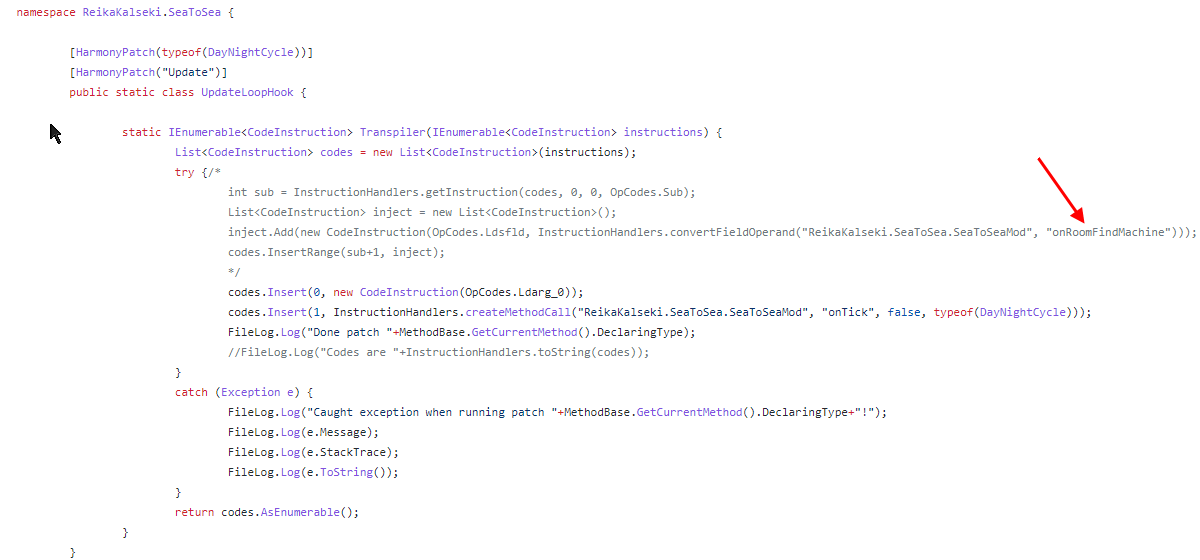
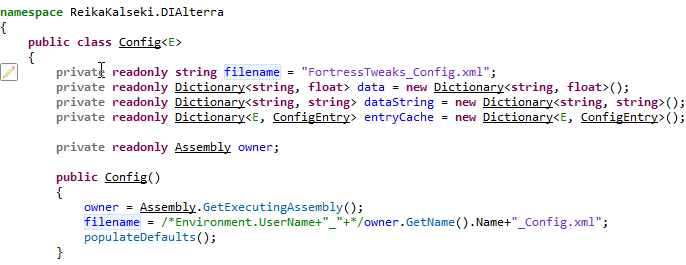
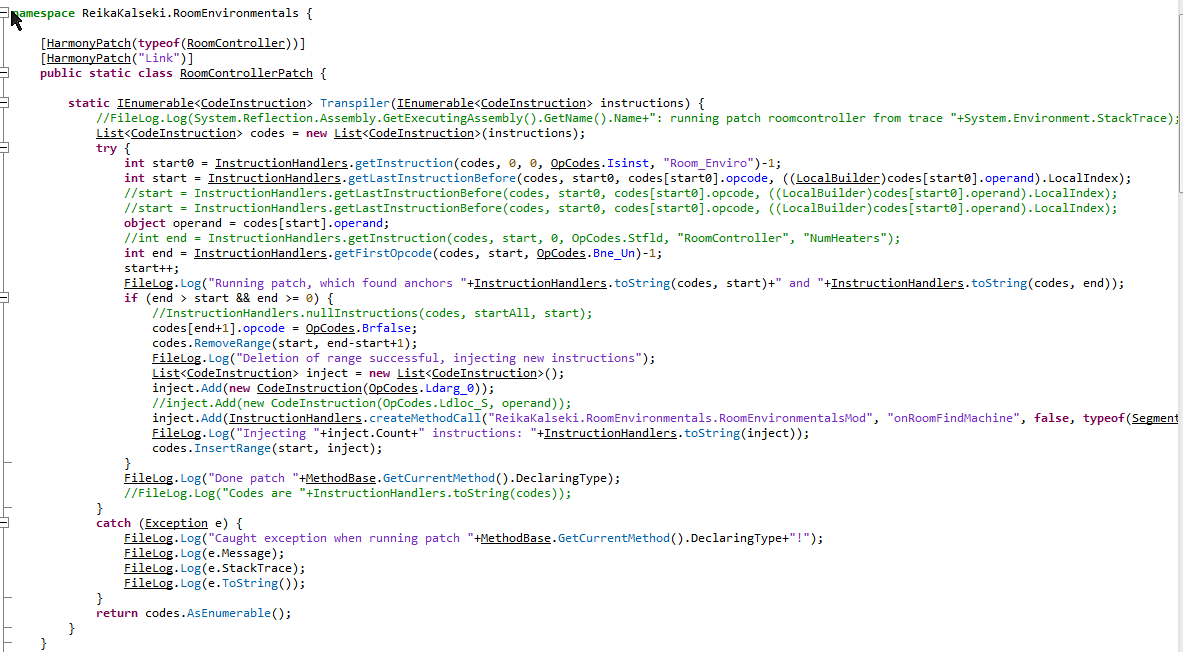
Explicit mention of old FCE mod code in the commented out patches, as these classes were initially copied from FortressTweaks and RoomEnvironmentals.
The first of these mods was a simple fix for the "F6 HUD" key, which was irritating on several occasions as F6 is my voice chat mute key (and has been since 2012). This became GUIOverhaul. After that came a minor QoL mod designed to address a few things that irritated me over the course of the original gameplay, such as excessive inventory sizes of a couple tools and most food decaying from the moment it was produced. With those and other changes, BalanceTweaks was born.
Finally, around mid April, I began work on by far the biggest and most complicated mod, what would become Sea to Sea (though it had yet to be named at this point).
Sea To Sea
Having completed the Subnautica storyline and progression, I realized that the majority of the map was not actually necessary for that purpose, which meant that a great many players would miss out on a huge number of interesting locations and their associated content. In my own case, I visited very little of the open biomes (Dunes, Crash Zone, Mountains, Sea Treader Path) before I consciously decided to do so after completing the story, and much the my other exploration I had done ultimately was unnecessary as well.I decided to make a mod that changed this, adding new content to many of the less-well-traveled regions, and redesigning much of the techtree to make it depend on that new content.
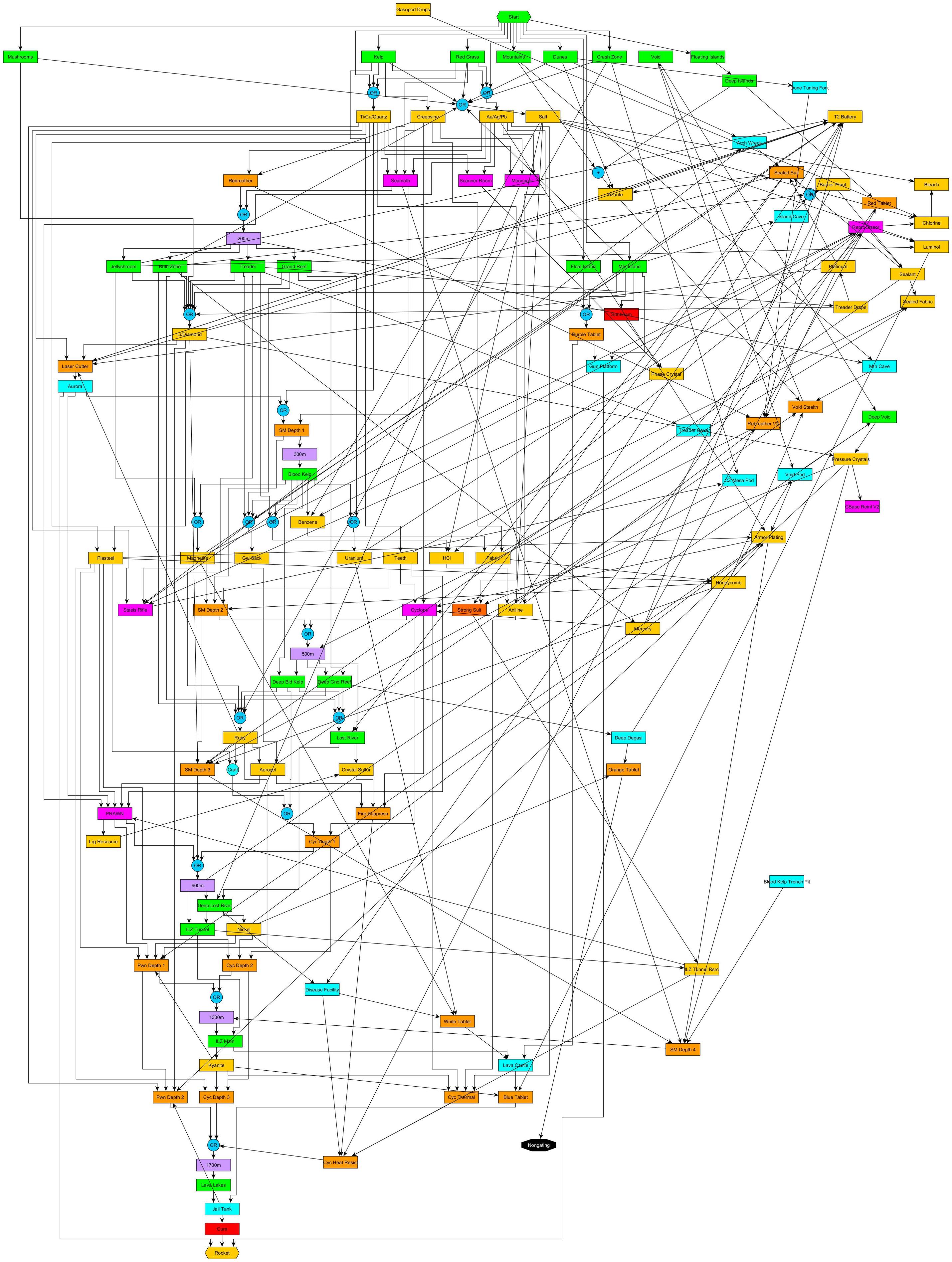
An intermediate flowchart of the new progression (disorganized nodes and connections being new content or changes).
That mod became Sea To Sea, and its set of features grew enormously to accommodate its goal. So much so, in fact...
Mod Explosion
With Sea To Sea growing so large and starting to include so many features that were not explicitly related to progression or exploration, only there to facilitate it, I decided to spin all of those feature clusters into their own dedicated mods. After a few days of refactoring, I had gone from making one mod to seven; In addition to Sea To Sea, there was now:- Dragon Industries, a core mod including all the shared code and intermod communications
- Exscansion, which contains all the scanner room improvements
- Ecocean, with most of the "new map content" except for a few things not able to be extracted from C2C (though this may eventually change)
- Re(ef)Balance, a collection of QoL and balance tweaks
- Auroresource, designed to enable renewable acquisition of materials to help make large and widespread base building more desirable
- Aqueous Engineering, and several seabase parts to encourage their use in more locations, and help them be more useful overall